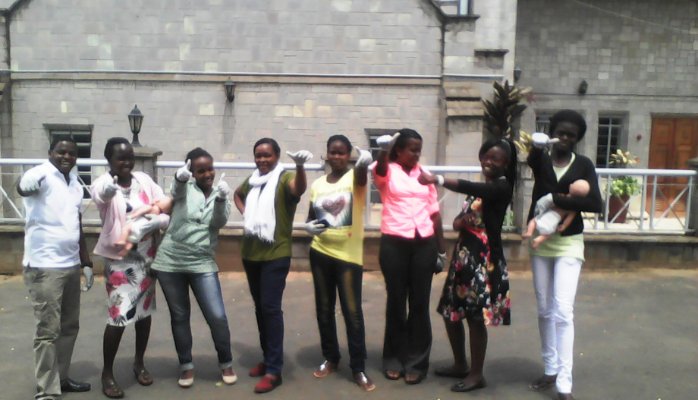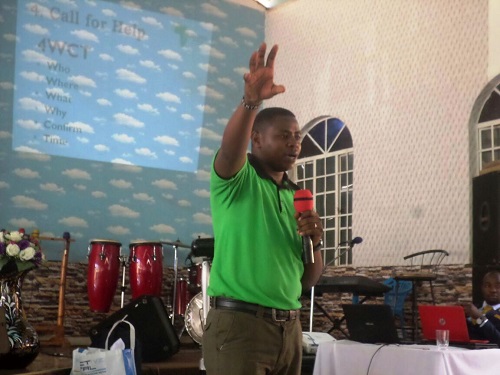Church sanctuary keepers play a vital role in maintaining the sanctity and orderliness of worship spaces. Their duties encompass a wide range of tasks aimed at ensuring the church environment is welcoming, clean, and conducive to worship. This document delves into the origins, attributes, duties, qualifications, common pitfalls, and modern trends associated with church sanctuary keeping. Additionally, it includes practical abbreviations and acronyms used in the field, and a call to action to explore more resources and from Ambassador Steve Mbugua the most re-known Church ushering and protocol advisor for further guidance.
Biblical Examples of Sanctuary Keepers
1. Levites and the Tabernacle: The Levites were responsible for the care and maintenance of the tabernacle, as outlined in Numbers 1:50-53. They ensured that the sacred space remained pure and orderly, reflecting early examples of dedicated sanctuary keepers.
2. Temple Servants (Nethinim): In Ezra 8:20, the Nethinim were appointed by King David and the leaders to assist the Levites in the service of the temple, highlighting the importance of support roles in maintaining sacred spaces.
3. Uzziah’s Overseeing: 2 Chronicles 26:18 describes how King Uzziah, though a ruler, respected the sanctuary’s sanctity by not overstepping his bounds, ensuring only the priests performed their duties, thus maintaining order.
4. The Priests and Levites during Hezekiah’s Reign: In 2 Chronicles 29:12-19, the priests and Levites cleansed and sanctified the house of the Lord under King Hezekiah’s reforms, illustrating the essential role of sanctuary keepers in reviving and maintaining worship spaces.
Attributes of a Good Sanctuary Keeper
1. Devotion to Duty: Demonstrates a strong commitment to maintaining the sanctuary.
2. Attention to Detail: Notices and addresses minor issues before they become major problems.
3. Reliability: Consistently performs duties on time and with care.
4. Physical Stamina: Capable of handling the physical demands of cleaning and maintenance.
5. Respect for Sacredness: Deep understanding and respect for the sanctity of the worship space.
6. Team Player: Works well with other members of the church staff and volunteers.
7. Organizational Skills: Keeps supplies and tools organized and easily accessible.
8. Discretion: Handles sensitive information with care and respects the privacy of others.
9. Communication Skills: Effectively communicates with church leadership and congregation members.
10. Problem-Solving Abilities: Quickly addresses and resolves maintenance issues.
11. Adaptability: Able to adjust to new tasks and changing schedules as needed.
12. Professionalism: Maintains a professional demeanor at all times, representing the church well.
Duties and Responsibilities of Sanctuary Keepers
1. Cleaning the Sanctuary: Regularly cleaning floors, pews, windows, and other surfaces.
2. Maintaining Supplies: Ensuring cleaning supplies are stocked and properly stored.
3. Setting Up for Services: Arranging chairs, podiums, and other necessary items for worship services.
4. Organizing Hymnals and Bibles: Keeping hymnals, Bibles, and other literature in order.
5. Caring for Altar Linens: Washing, ironing, and replacing altar linens as needed.
6. Decorating for Seasons: Coordinating seasonal decorations such as Christmas, Easter and other general events.
7. Checking Restrooms: Ensuring restrooms are clean and well-stocked with necessary supplies.
8. Handling Waste: Emptying trash bins and managing waste disposal.
9. Monitoring Safety Hazards: Identifying and addressing potential safety hazards.
10. Maintaining Equipment: Ensuring all maintenance equipment is in good working order.
11. Supporting Events: Assisting with setup and teardown for special events and meetings.
12. Coordinating Volunteers: Managing and scheduling volunteer teams for various tasks.
13. Inspecting the Facility: Conducting regular inspections to identify areas needing attention.
14. Reporting Issues: Reporting maintenance and safety issues to church leadership.
15. Handling Emergencies: Responding promptly to emergencies, such as spills or accidents.
16. Securing the Sanctuary: Ensuring the sanctuary is locked and secure when not in use.
17. Gardening and Groundskeeping: Maintaining the church grounds, including gardens and lawns.
18. Overseeing HVAC Systems: Monitoring and adjusting heating, ventilation, and air conditioning systems.
19. Liaising with Contractors: Coordinating with external contractors for specialized maintenance.
20. Documenting Work: Keeping records of maintenance tasks and schedules.
Qualifications of Church Sanctuary Keepers
1. Background Check: Must pass a thorough background check.
2. Experience: Previous experience in cleaning or maintenance roles.
3. Physical Fitness: Ability to perform physically demanding tasks.
4. Knowledge of Cleaning Procedures: Familiarity with effective cleaning techniques and materials.
5. Technical Skills: Basic understanding of maintenance and repair techniques.
6. Organizational Skills: Ability to manage time and resources efficiently.
7. Problem-Solving Skills: Ability to address issues as they arise effectively.
8. Team Management: Experience in managing or coordinating volunteers or staff.
9. Communication Skills: Strong verbal and written communication skills.
10. Respect for Sacred Spaces: Deep understanding and respect for the church’s spiritual environment.
Examples of Where Church Sanctuary Keeping Went Wrong
1. Unclean Facilities: Failure to maintain cleanliness resulted in an unpleasant environment for worshippers.
2. Disorganized Events: Poor setup and teardown for events caused confusion and disruption.
3. Safety Hazards Overlooked: Neglecting potential safety hazards led to accidents and injuries.
4. Supply Shortages: Running out of essential supplies, disrupting services and events.
5. Poor Communication: Lack of communication with church leadership led to unaddressed maintenance issues.
6. Mismanaged Volunteers: Ineffective coordination of volunteer teams resulted in incomplete tasks.
7. Inadequate Training: Insufficient training of sanctuary keepers led to subpar performance.
8. Delayed Repairs: Procrastination in addressing repair needs caused further damage.
9. Ignoring Seasonal Changes: Failing to update decorations and setups for different seasons reduced the aesthetic appeal.
10. Security Breaches: Neglecting to secure the sanctuary properly led to unauthorized access and potential theft.
Current Trends in Church Sanctuary Keeping
1. Eco-Friendly Practices: Implementing green cleaning products and practices.
2. Automated Systems: Using automated cleaning and maintenance systems.
3. Volunteer Engagement: Increasing volunteer participation through structured programs.
4. Advanced Training Programs: Offering advanced training for sanctuary keepers.
5. Health and Safety Protocols: Enhancing occupational health and safety measures.
6. Digital Record Keeping: Utilizing digital systems for maintenance records and schedules.
7. Smart Technology: Integrating smart technology for efficient facility management.
8. Professional Development: Encouraging continuous learning and development for sanctuary keepers.
9. Community Involvement: Engaging the congregation in maintaining the sanctuary.
10. Sustainability Initiatives: Incorporating sustainable practices in sanctuary upkeep.
Abbreviations and Acronyms in Church Sanctuary Keeping
1. HVAC: Heating, Ventilation, and Air Conditioning
2. PPE: Personal Protective Equipment
3. SOP: Standard Operating Procedure
4. LED: Light Emitting Diode
5. EAP: Emergency Action Plan
6. OSHA: Occupational Safety and Health Administration
7. EPA: Environmental Protection Agency
8. MSDS: Material Safety Data Sheet
9. CCT: Color-Corrected Temperature
10. LEED: Leadership in Energy and Environmental Design
For more insightful articles and books on church sanctuary keeping and other church protocol matters, visit [my website](https://www.ambstevembugua.co.ke) or contact me directly via WhatsApp at +254724036078, email at info@ambstevembugua.co.ke, and on all social media platforms as @Ambstevembugua. Don’t forget to share this document with your colleagues and friends to promote better sanctuary keeping practices.
READ MORE
Church Security You Tube Video
Road Safety
Empowering Church Ushers
Effective Church Protocol
Church Hospitality Best Practices



















